10 Of The Most Memorable Gardens By Artists
By Something CuratedGardening has long offered a means of aesthetic expression through art and nature – a display of taste and style, as well as an individual or culture’s philosophy, status, and, at times, national pride. A movement in the 1800s, coinciding with the increased popularity of ornamental horticulture, saw many artists famously cultivate their own gardens. Like Claude Monet at Giverny, painters at the time intended for their green pursuits to serve as inspiration. The practice extends far beyond the Impressionists though, with a number of contemporary artists continuing to design captivating private and public landscapes today.
Gabriel Orozco & 6a architects || Orozco Garden, South London Gallery, London
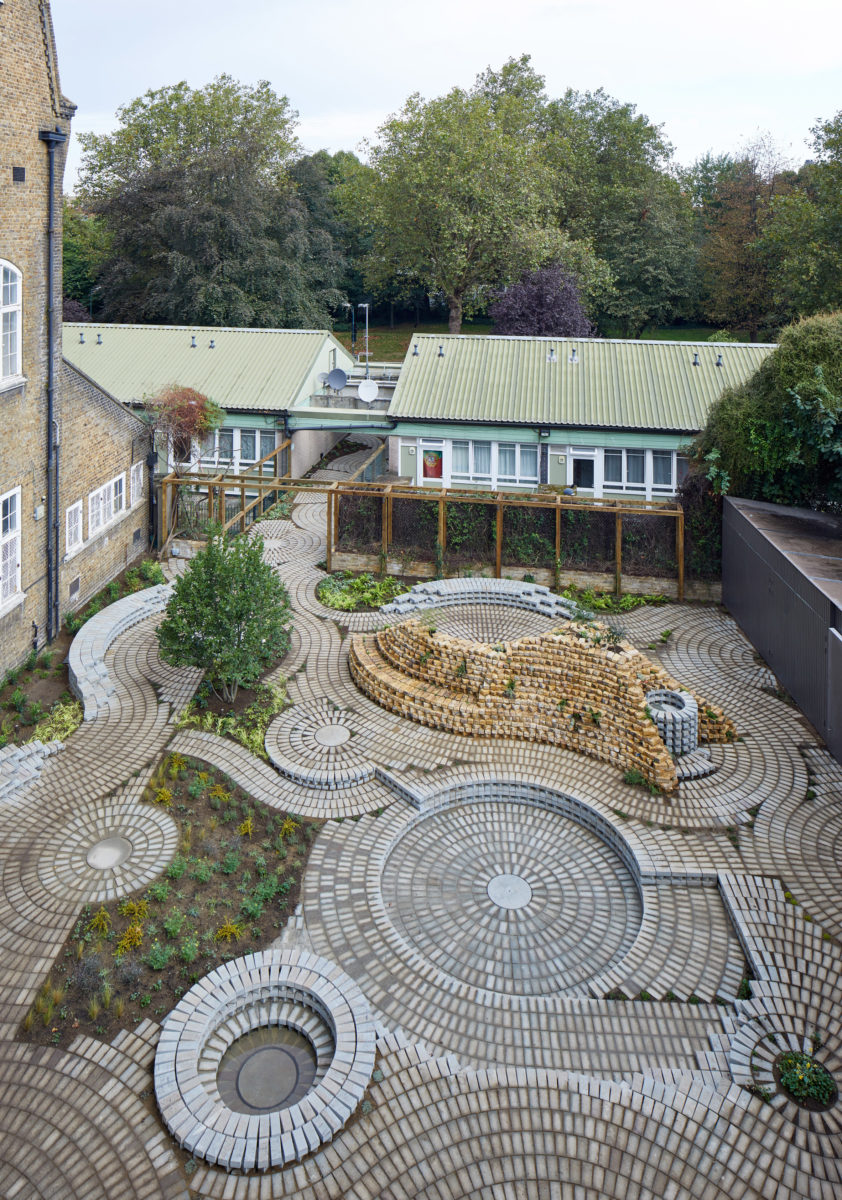
The South London Gallery’s recently opened garden was created by the artist Gabriel Orozco, with support from 6a architects and horticulturists at Kew. Orozco, who was born in Mexico and currently lives in Tokyo, had never before designed a garden, but embraced the challenge of transforming a largely inaccessible area of land at the back of the gallery into a unique sculptural work as part of his artistic practice. The choice of materials was drawn from the language of the gallery’s Victorian building and includes bricks from the rear facade. Playing on the idea of an urban ruin, the garden will gradually evolve to become rambling and overgrown with different grasses, low-level creepers and fragrant plants.
Doug Aitken || The Garden, 2017, Aarhus, Denmark
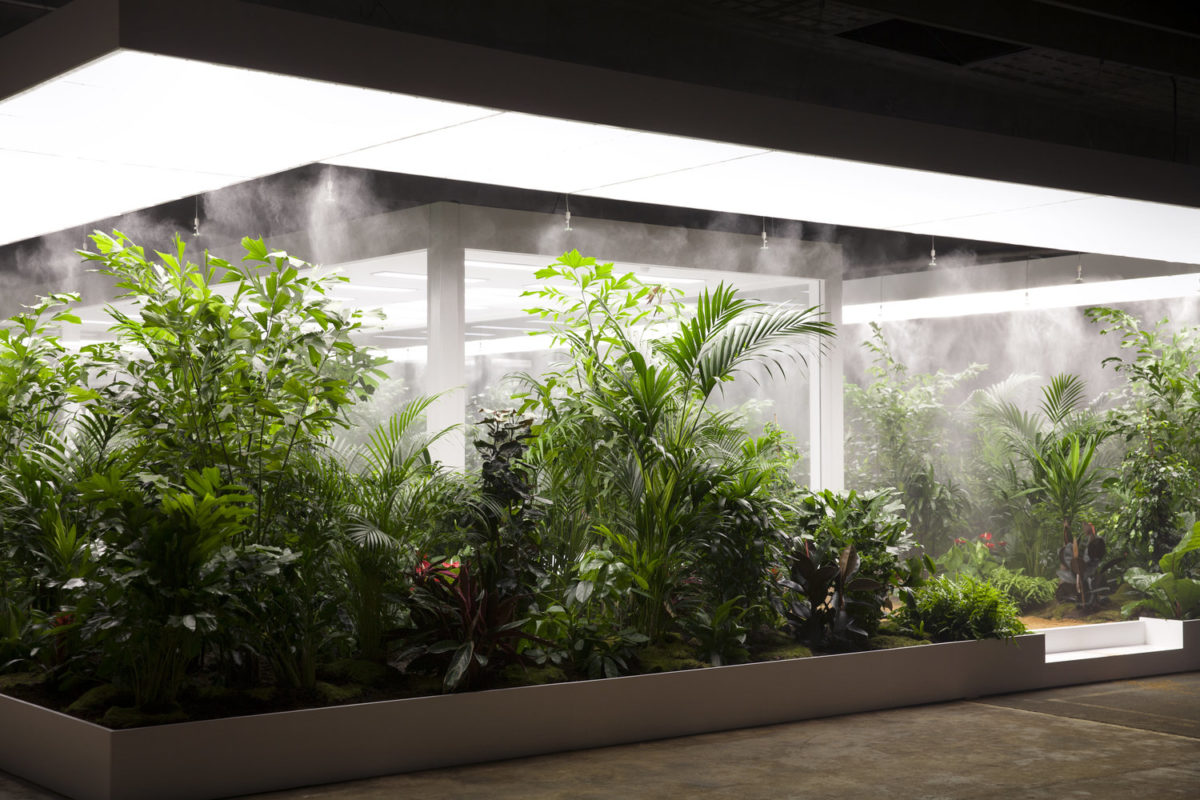
In his work, The Garden, 2017, Doug Aitken explores the dichotomy between the man-made and the natural. Inside an industrial warehouse nearby Copenhagen, viewers are greeted by a tropical garden surrounding a bulletproof glass room with modern furniture. Participants are invited to spend ten minutes in the cube with a baton, activating the installation. Once inside, they are free to liberate any emotions by banging, smashing, and breaking any object in sight. Their rage becomes the centrepiece of the installation, as the audience on the other side of the glass gathers to watch the destruction at play.
Sol LeWitt || Lines in Four Directions in Flowers, Philadelphia
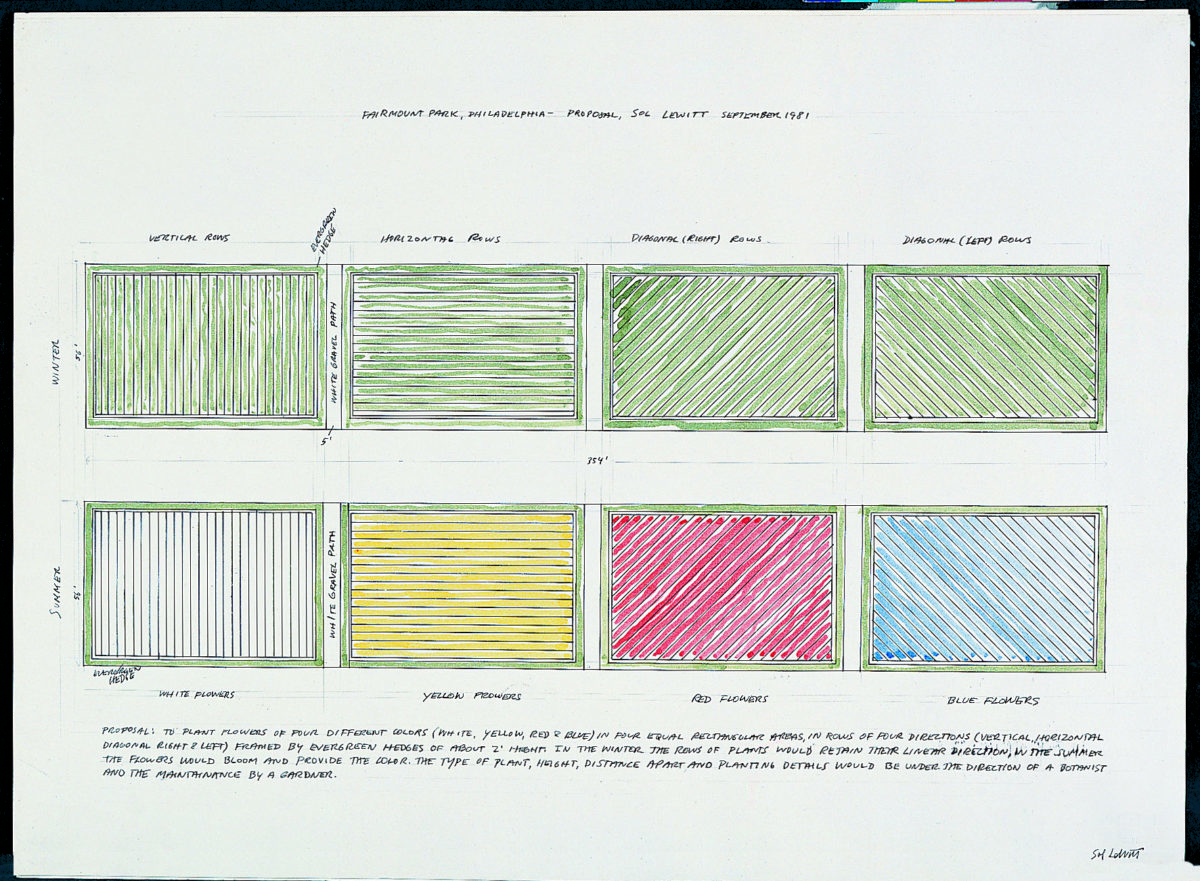
Sol LeWitt designed Lines in Four Directions in Flowers in 1981 when he was invited by the Fairmount Park Art Association to prepare a proposal for a public work. At that time, LeWitt suggested an installation which would consist of flower plantings of four different colours in four equal rectangular areas, in rows of various directions framed by evergreen hedges of about two feet in height. In the winter the rows of plants would retain their linear direction, in the summer the flowers would bloom and provide colour. In 2012, the Philadelphia Museum of Art along with OLIN architects brought LeWitt’s work back to life.
Jacques Majorelle || Jardin Majorelle, Marrakech
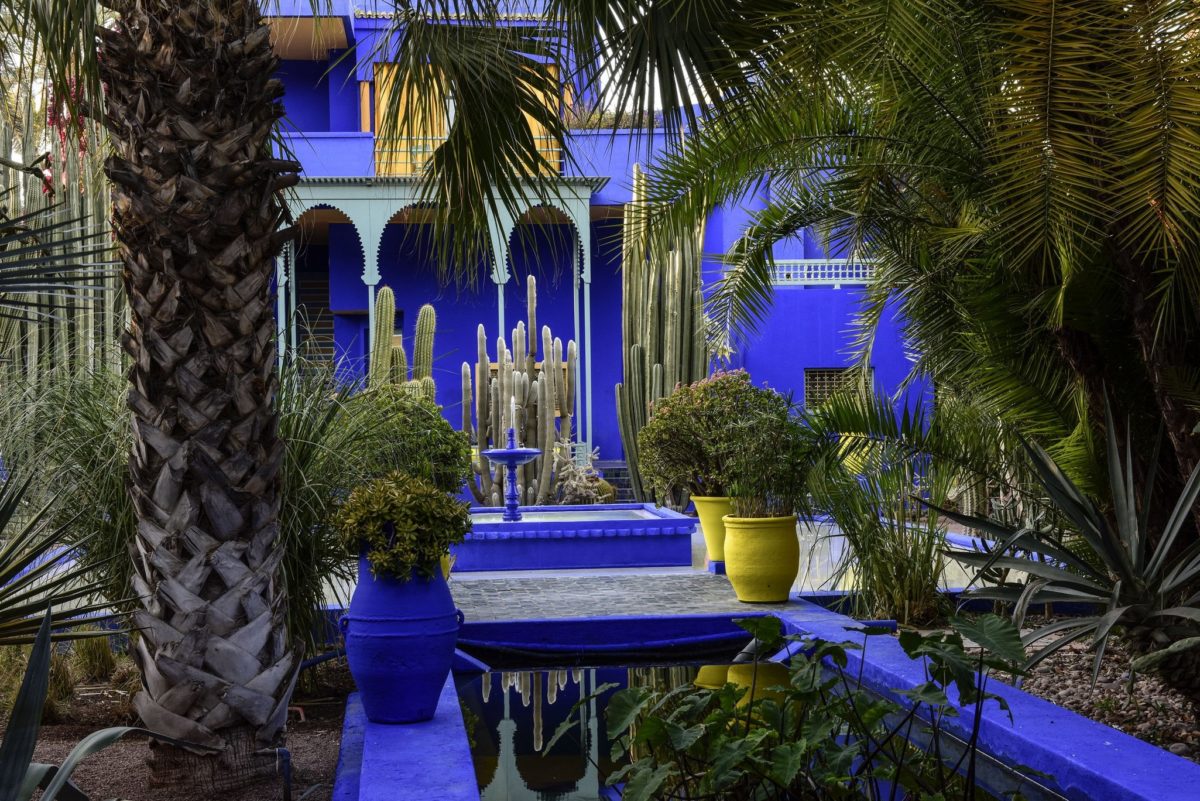
It took French painter Jacques Majorelle forty years of dedication to create his enchanting garden in the heart of Marrakech. Poor health drew the artist to the warmth of Morocco, where he finally settled in 1923. The artist built an Art Deco studio on his property, but it was the surrounding gardens that would become his life’s work, with over 300 species making up the ambitious planting scheme. Following a car accident, Majorelle was forced to return to Paris in 1962 and passed away shortly after. His glorious garden fell into disrepair, and by 1980 it was slated for redevelopment, until French fashion designer Yves Saint Laurent and industrialist Pierre Bergé purchased the property, returning Jardin Majorelle to its former glory.
Robert Irwin || Central Garden at the Getty Center, Los Angeles
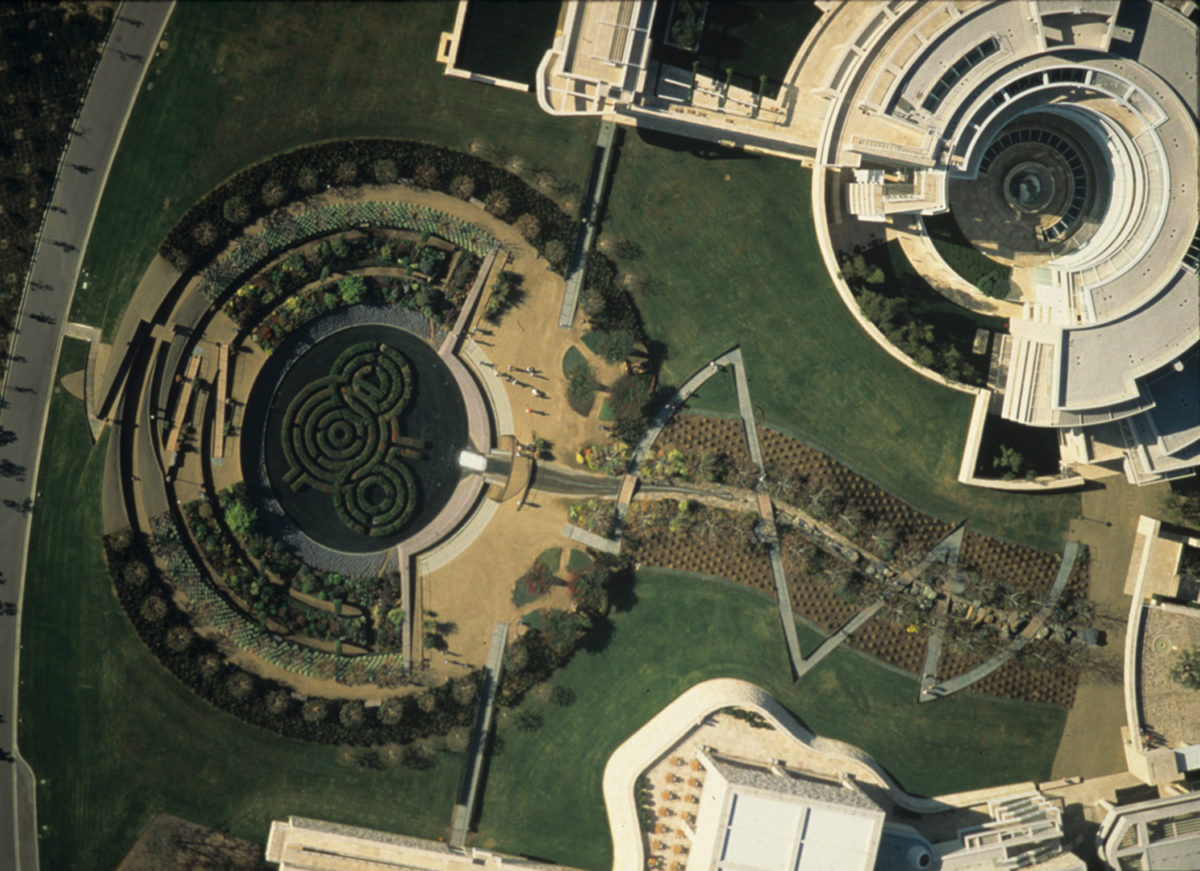
More than 500 varieties of plants are used in the landscaping of the Central Garden, created by artist Robert Irwin. The 134,000-square-foot design features a natural ravine and tree-lined walkway that leads the visitor through an experience of sights, sounds, and scents. The walkway traverses a stream that winds through a variety of plants and gradually descends to a plaza where bougainvillea arbors provide scale and a sense of intimacy. Irwin began planning the Central Garden in 1992, as a key part of the Getty Center project. Since the Center opened in 1997, the Central Garden has evolved as its plants have grown and been trimmed, and new plants are constantly being added to the palette.
Frida Kahlo || Casa Azul, Mexico City
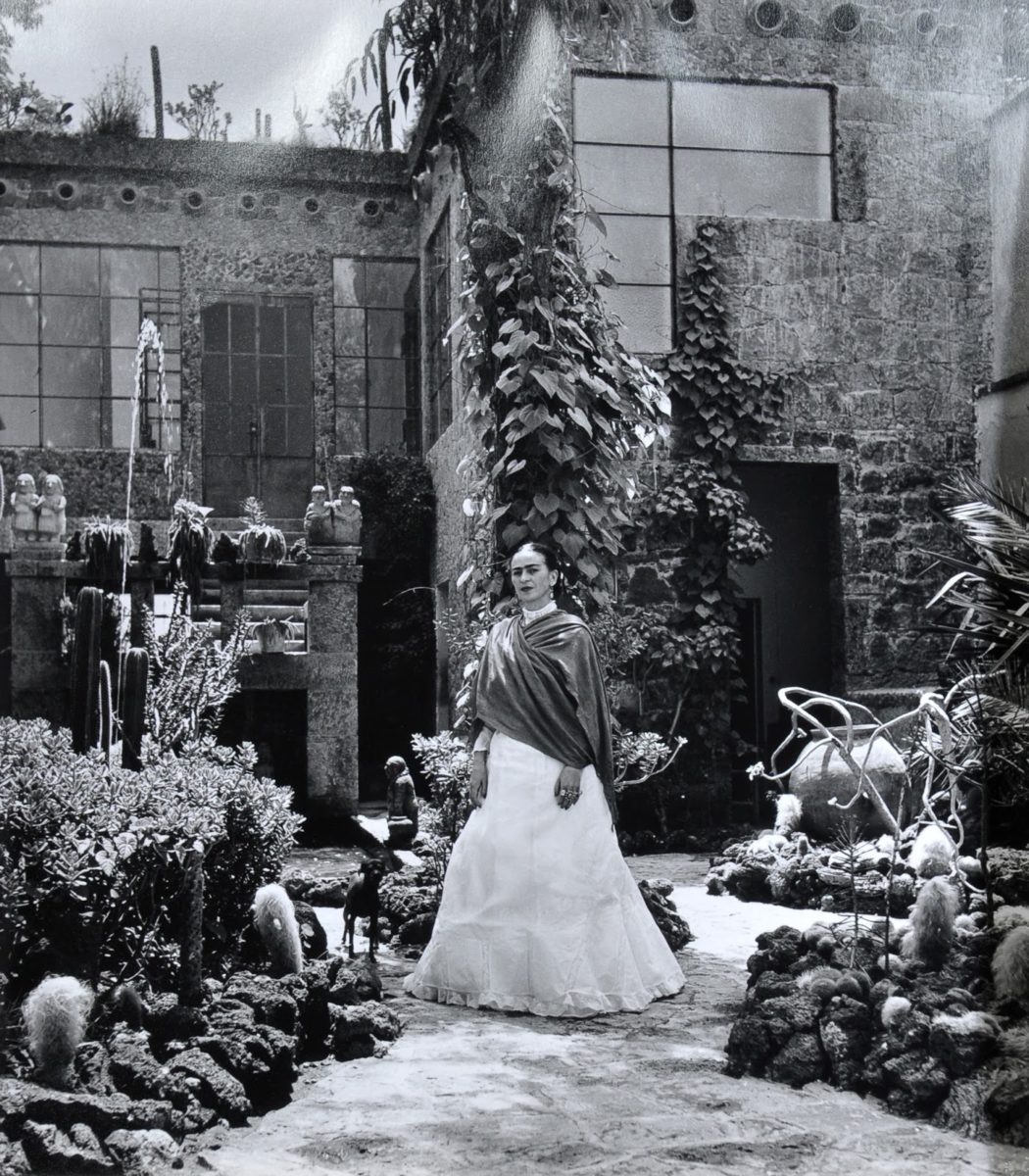
In many respects, the Casa Azul, or Blue House, in the Coyoacán area of Mexico City, where Kahlo lived for most of her life, and its garden can be counted as one of her artworks. Bought by her father in 1904 – three years before she was born – it came to her in 1939, when her husband Diego Rivera took over the mortgage. Over the years she and Rivera renovated, expanded and re-envisioned both the house and garden to express their wide-ranging tastes and their commitment to the idea of Mexico. Kahlo in particular treasured plants and used her affinity for colour to assemble pots and plant beds, which she embellished with a roster of sculptures and ancient stones.
Adam Purple || Garden of Eden, New York
In 1975, artist and social activist Adam Purple, known for his permanent purple attire, looked out of his window in the crime-ridden Lower East Side of New York City to witness two children playing in rubble. Struck by his own memories of a childhood spent barefoot in rural pastures and forests in Missouri, he wished these children could feel the dirt beneath their own feet in a safe environment. Almost immediately he began work on the Garden of Eden. Over a period of five years, Purple worked continuously to build a concentric garden that would eventually grow to 15,000 square feet.
Mary Mattingly || Swale, New York
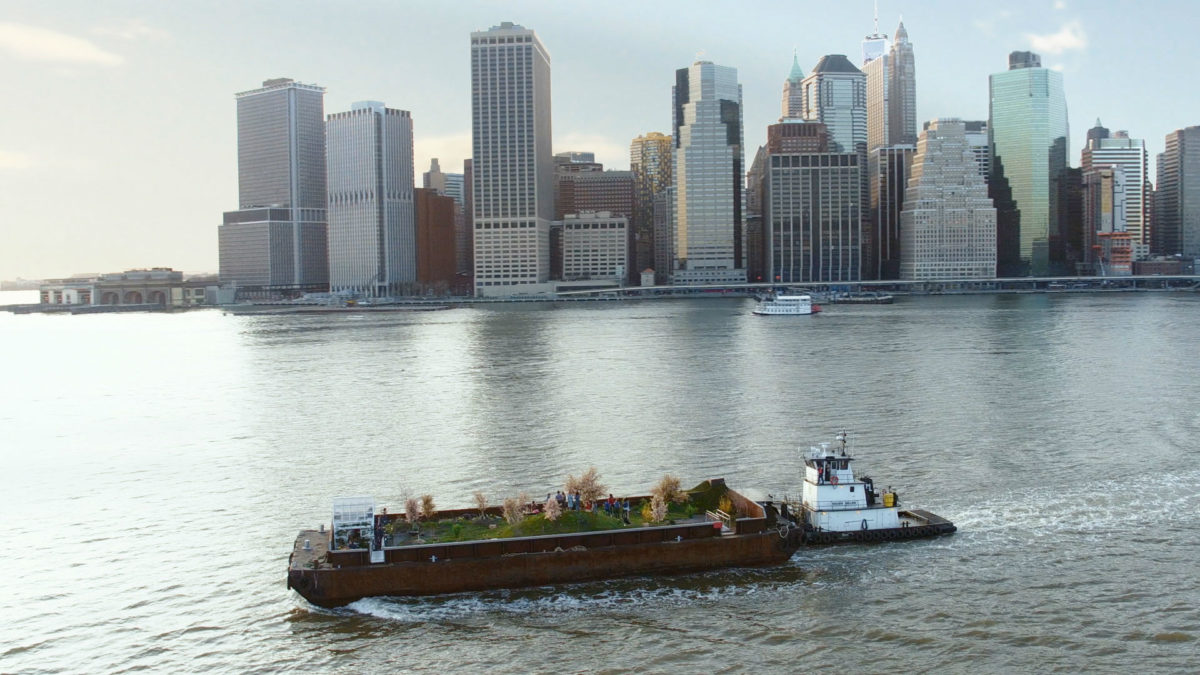
Swale, as described on its website, is “a collaborative floating food project,” a forest on top of an 80-foot-by-30-foot barge, drifting along New York City’s waterways, docking at various coastal points to let people aboard to harvest Swiss chard, low-bush blueberries, and other fresh produce. The reason it can’t break ground on dry land, explains its developer, the artist Mary Mattingly, is a century-old ordinance forbidding picking or foraging for food on public land. Mattingly herself is working actively to change the rules, by meeting regularly with the Parks Department and other city organisations, lobbying for legal urban farming in parks and public spaces to combat food deserts.
Ian Hamilton Finlay || Little Sparta, Pentland Hills, Scotland
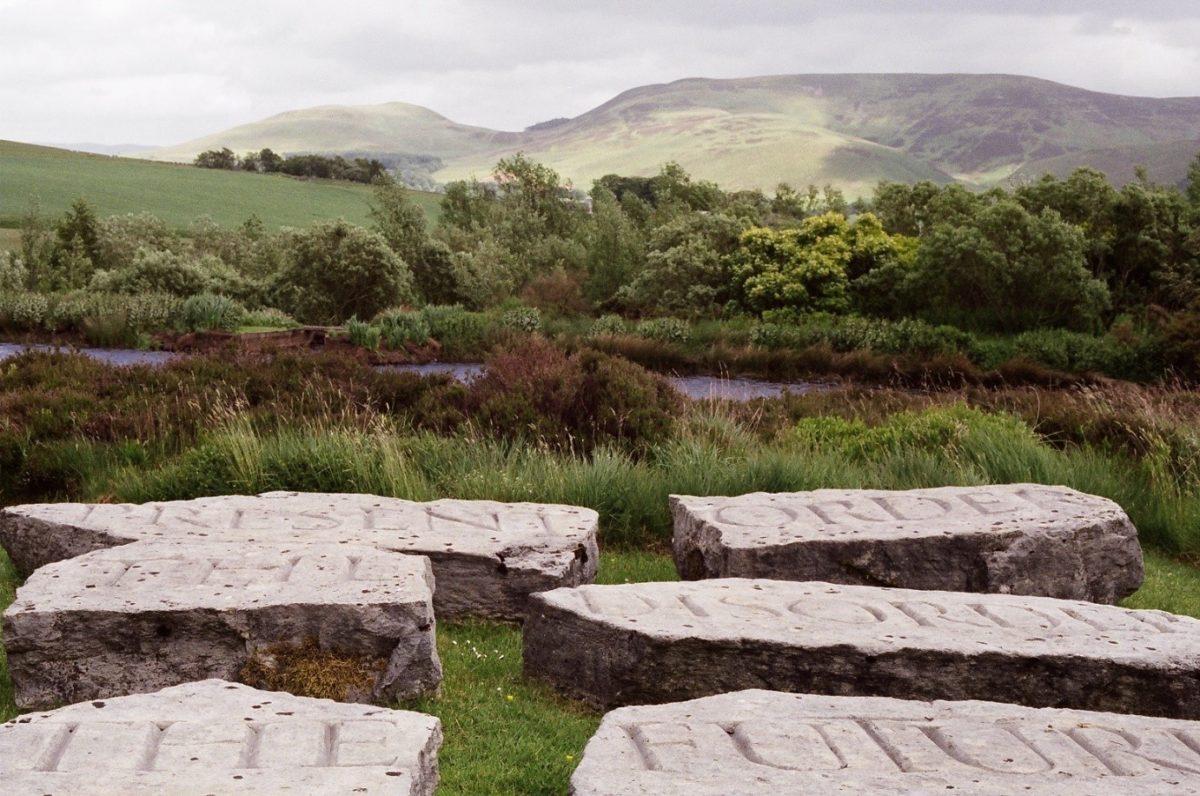
Set in the Pentland Hills near Edinburgh, Little Sparta is perhaps Ian Hamilton Finlay’s greatest work of art. The garden is created from the fusion of poetic and sculptural elements with those of the natural landscape. While works of art are commonly viewed in galleries, public parks and streets, museums and private houses, it is perhaps a unique achievement to have created a garden which is itself an artwork encompassing within it both horticultural elements and individual works in such materials as stone, wood and metal. The Second World War, the sea and its fishing fleets are among the sources of metaphor and image which are realised in the garden’s sculptures which now number over 275.
Piet Oudolf & Peter Zumthor || Serpentine Gallery Pavilion 2011, London
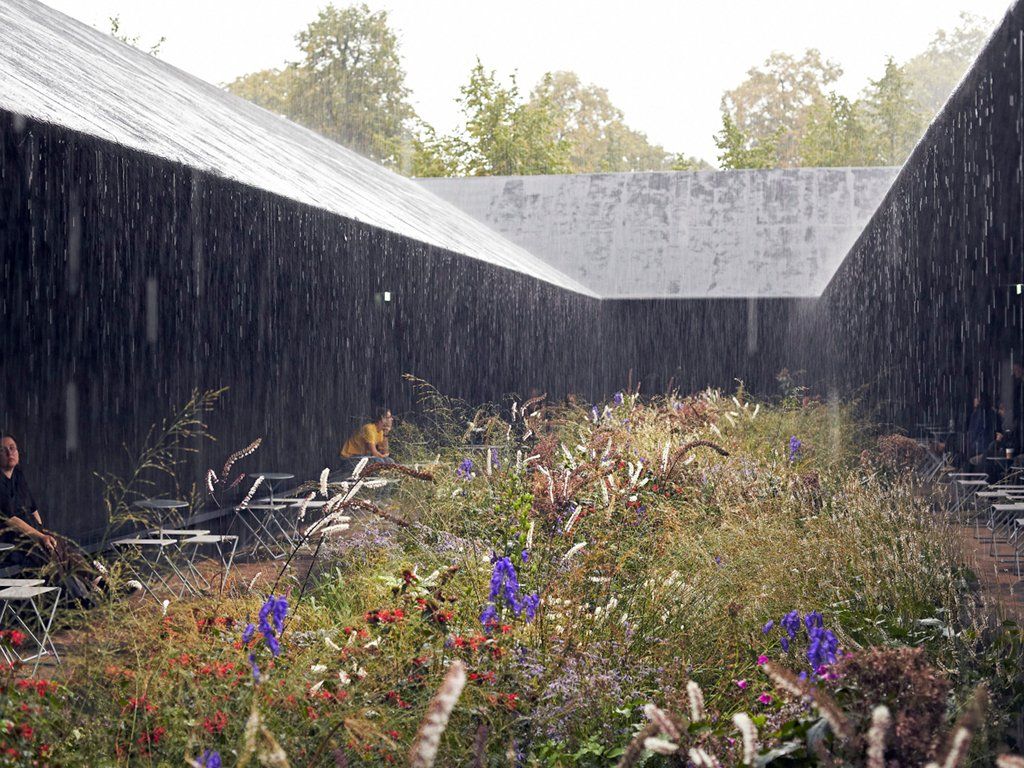
Though not technically conceived by a fine artist, for the 2011 Serpentine Gallery Pavilion, Swiss architect Peter Zumthor included a specially created garden by the influential Dutch designer Piet Oudolf – at the heart of the pavilion was a garden in a courtyard setting, surrounded on all sides by matt black walls and deep eaves, with a large section of its roof open to the sky. The effect was to concentrate attention on the inner central garden space but to also turn the mind to the sky above. Oudolf’s signature was clear in this work, with grasses and perennials featuring strongly; typical of the designer’s schemes, the plants selected offered depth in terms of form and texture as well as colour.
Feature image: Orozco Garden, South London Gallery, Gabriel Orozco & 6a architects (via South London Gallery)